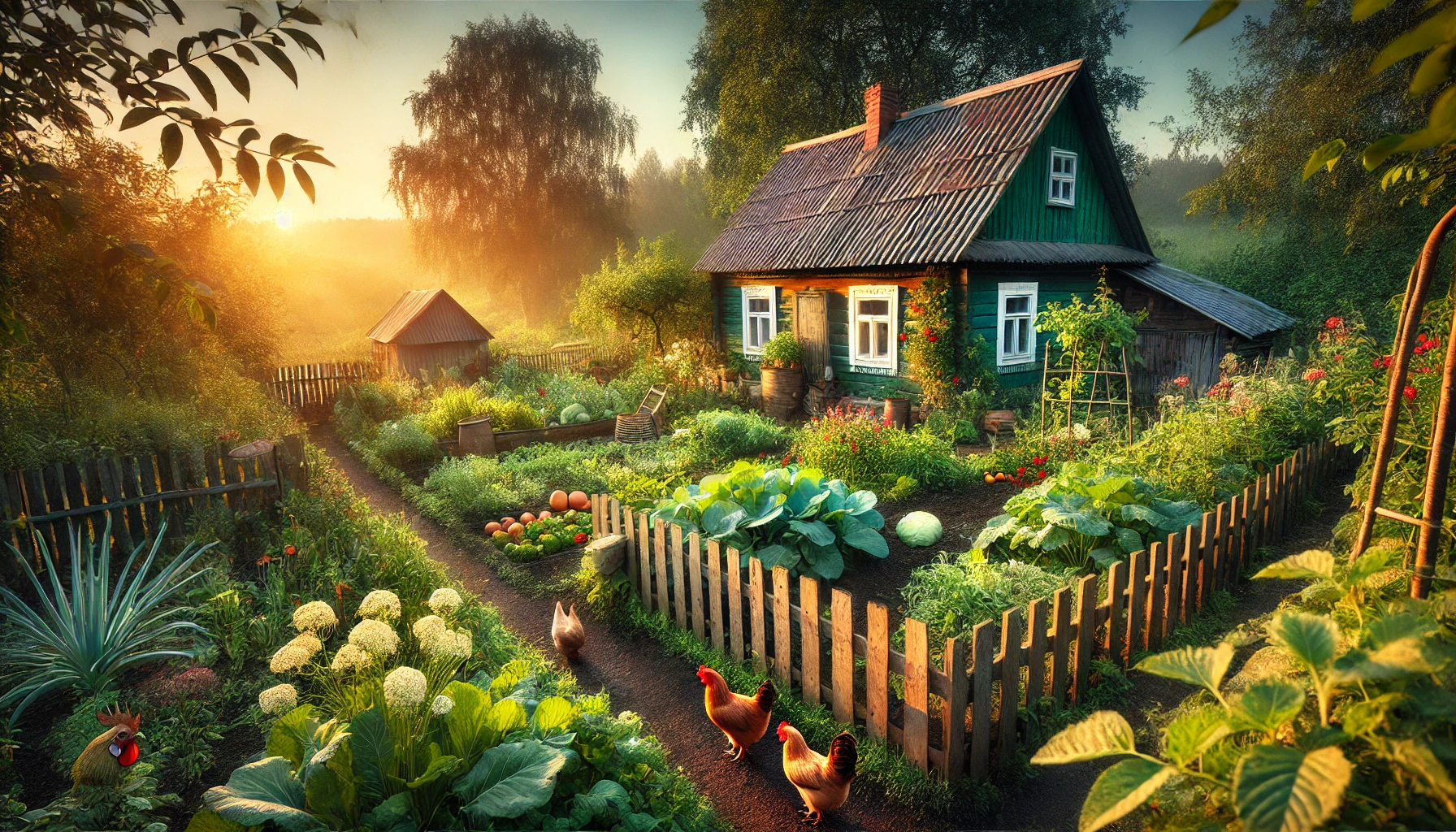This post contains affiliate links. As an Amazon associate I may earn small commission from qualifying products at no cost to you.
Welcome to the exciting world of homesteading! Whether you’re dreaming of growing your own food, raising chickens, or living off-grid, the journey to self-sufficiency is as rewarding as it is life-changing. Starting your homesteading adventure can seem overwhelming at first, but with the right guidance, you can turn your dream into a thriving reality. Here’s your ultimate step-by-step guide to help you begin.
1. Define Your Homesteading Goals
Homesteading looks different for everyone. Are you planning to grow all your food? Do you want to generate renewable energy? Or are you simply looking to live more sustainably? Start by listing your goals. Whether you’re working with a small urban backyard or acres of land, knowing your vision will guide your plans and priorities.
Quick Tip: Create a vision board or a journal to map out your ideal homestead. Dream big but start small!

2. Start with Gardening
A thriving garden is the heart of any homestead. Begin by growing easy-to-maintain vegetables like tomatoes, lettuce, and zucchini. If space is limited, try container gardening or vertical gardening to maximize your harvest.
Pro Tip: Consider investing in heirloom seeds for a more diverse and sustainable garden. These seeds not only produce delicious, nutritious produce but can also be saved for future planting.
>>Get the Ultimate Homesteading Guide Here
3. Master Basic Skills
Homesteading is all about self-reliance. Start learning essential skills like:
- Composting
- Canning and preserving food
- Basic carpentry for DIY projects
- Raising chickens or small livestock
These skills will help you save money and reduce your dependence on store-bought goods.
4. Build Sustainable Systems
Creating a sustainable homestead isn’t just about food. You’ll also want to consider systems for water collection, renewable energy, and waste management.
- Water: Set up rainwater harvesting systems for irrigation.
- Energy: Consider installing solar panels or a wind turbine to reduce utility bills.
- Composting: Build a compost bin for food and yard waste to create nutrient-rich soil for your garden.
5. Learn from Experts
Homesteading is a journey, and the best way to learn is from those who have already walked the path. One resource I can’t recommend enough is The Self-Sufficient Backyard by Ron and Johanna Melchiore. This incredible guide is packed with practical advice, step-by-step instructions, and over 40 years of off-grid living experience.
Why This Book?
- It teaches you how to grow all your food in just 1,020 square feet per person.
- It provides detailed plans for setting up hybrid energy systems.
- You’ll learn essential skills like medicinal gardening, bio-insect control, and much more.
If you’re serious about homesteading, this is a resource you’ll return to time and time again. Check it out here and start building your dream homestead today.
6. Connect with the Homesteading Community
One of the joys of homesteading is the community it brings. Join online forums, attend local workshops, or participate in community gardening projects. Sharing tips and learning from others can fast-track your progress and keep you motivated.
Remember, homesteading is a marathon, not a sprint. Focus on one project at a time, whether it’s setting up a chicken coop or starting a vegetable garden. Celebrate small victories and learn from challenges. Over time, your homestead will grow into a reflection of your hard work and dedication.
Now that you’re ready to start homesteading, learn these 10 essential skills for self-sufficiency.
FAQs
1. What is homesteading?
Homesteading is a lifestyle focused on self-sufficiency, involving activities like growing your own food, raising livestock, preserving food, and utilizing sustainable practices to reduce reliance on external resources.
2. Do I need a lot of land to start homesteading?
Not necessarily. Homesteading can be adapted to various spaces, including urban settings. Even with a small backyard or balcony, you can start with container gardening, vertical gardens, or small-scale projects to increase self-sufficiency.
3. How do I start a homestead on a budget?
Begin by setting clear goals and prioritizing projects that offer the most immediate benefits. Utilize resources you already have, learn essential skills through free or low-cost workshops, and consider bartering or trading within the homesteading community to acquire necessary tools and materials.
4. What are the essential skills I should learn first?
Starting with basic gardening, composting, food preservation (like canning and drying), and simple carpentry can be beneficial. These foundational skills will support many homesteading activities and help you become more self-reliant.
5. How can I manage time effectively while homesteading?
Homesteading can be time-intensive. It’s important to start small, set realistic goals, and create a schedule that balances homesteading tasks with other responsibilities. Over time, as you become more efficient, you can expand your activities.
6. Are there legal considerations I should be aware of?
Yes, it’s crucial to research local zoning laws, building codes, and regulations related to livestock, water usage, and renewable energy installations. Some areas may have restrictions that could impact your homesteading plans.
7. How can I connect with other homesteaders?
Joining online forums, attending local workshops, participating in community gardens, and engaging with social media groups dedicated to homesteading are great ways to connect, share experiences, and learn from others.
8. What challenges should I anticipate?
Common challenges include time management, financial investment, dealing with pests, and the learning curve associated with new skills. Approaching these challenges with patience and viewing them as learning opportunities can lead to personal growth and a more rewarding homesteading experience.
Final Thoughts
Starting your homesteading journey is an adventure filled with endless opportunities to grow, learn, and thrive. By setting clear goals, mastering foundational skills, and utilizing expert resources like The Self-Sufficient Backyard, you’ll be well on your way to creating a sustainable and fulfilling lifestyle.
So, what are you waiting for? Grab a shovel, plant those seeds, and take your first step toward a self-sufficient future. Your homesteading dream is closer than you think!








